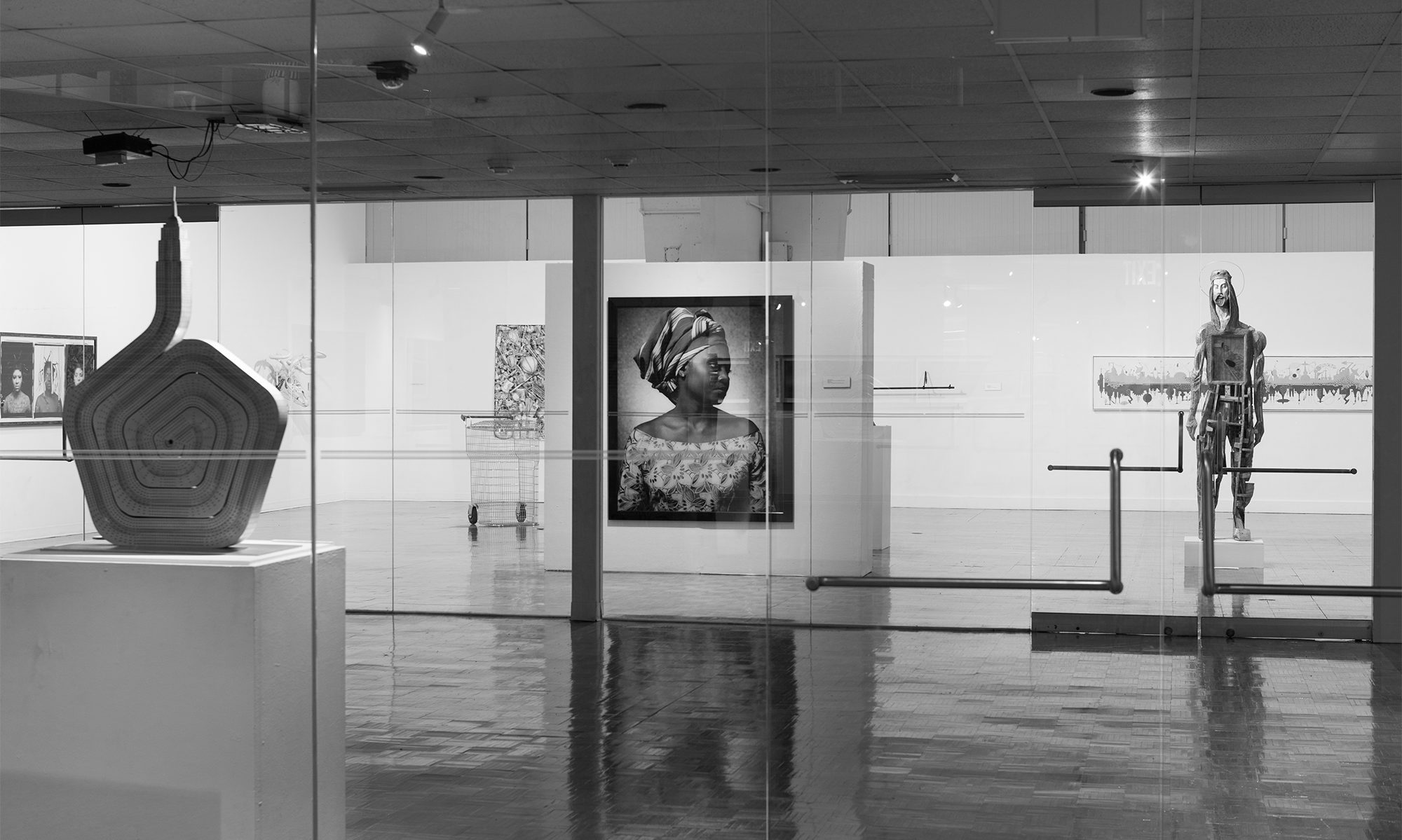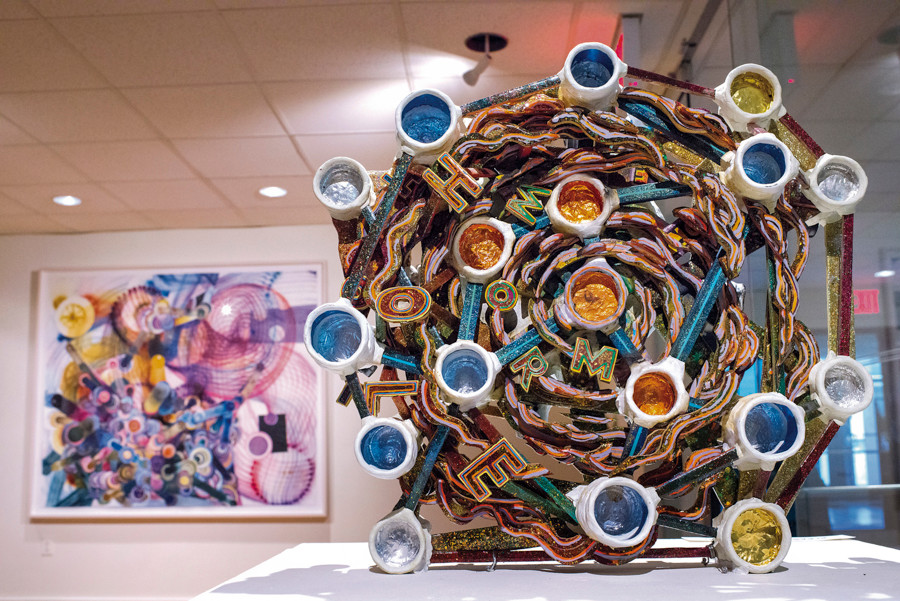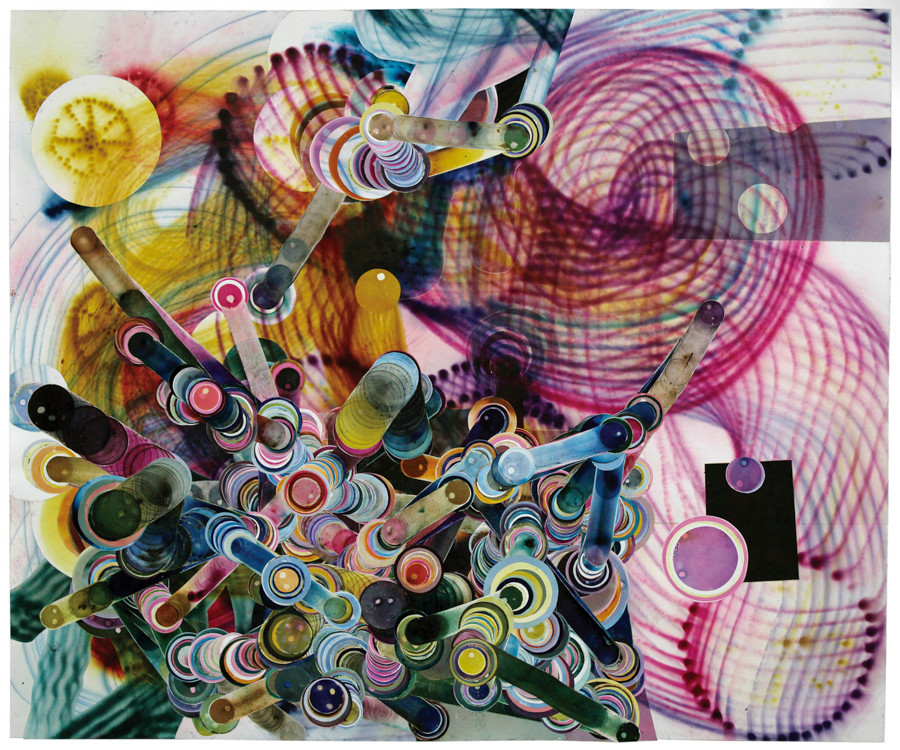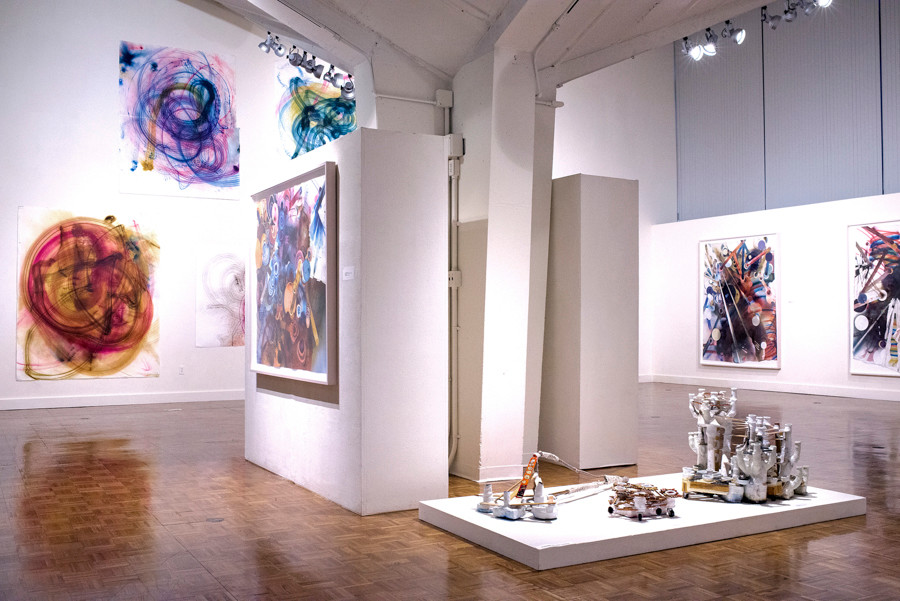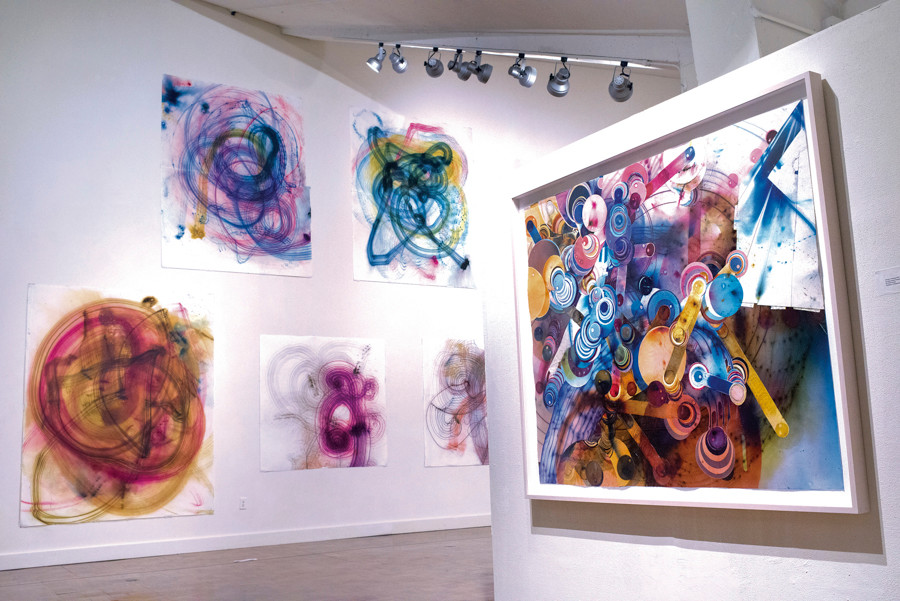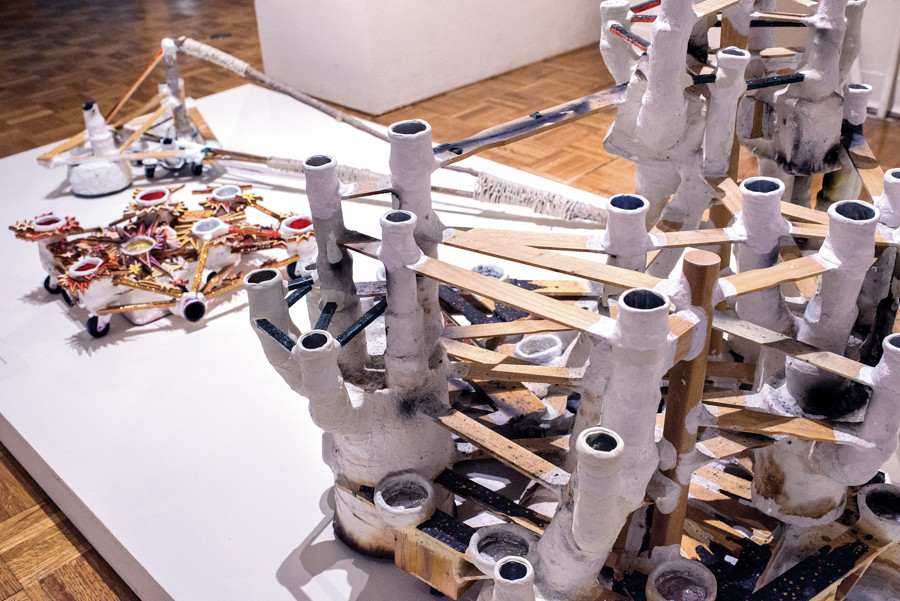Lehman College Art Gallery | City University of New York
October 6 – January 5, 2016
This project is co-curated by Susan Hoeltzel and Yuneikys Villalonga
See Checklist at Lehman College Art Gallery’s Website
Rosemarie Fiore: Smoke features Fiore’s “Fireworks Drawings” and “Smoke Paintings,” two series of dramatic gestural abstractions that are literally the result of pyrotechnics—primarily color smoke bombs whose exhaust she harnesses using machines she creates. Their lush, saturated colors and lyrical passages result ironically from the power of explosions—things like jumping jacks, monster balls, rings of fire, and lasers. For Fiore the fireworks and machines offer another approach to mark-making, an alternative form of paint and brush. In earlier work Fiore has adapted and re-purposed familiar machines—waffle irons, hand-held kitchen mixers, Subaru rear window wipers, floor polishers, lawnmowers, pinball machines, and carnival rides—mechanizing the process and opening it up to chance and the unexpected. It is a process that lends itself to performance and, in the instance of the “Smoke Painting” series, involves a rhythmic choreography as she directs the machines. The finished works document her movement and interactions with the paper. Built in a succession of many layers, the drawings undergo revisions and editing as the work evolves, balancing chance with volition and unpredictable variables with aesthetic choice.
The notion of using smoke bombs to draw with occurred while Fiore was at an artist residency in Roswell, New Mexico in 2002. During a celebration, she noticed the carbon trail of an accidentally dropped smoke bomb as it moved across a cement floor. It was the beginning of the experimentation that led to the series of works in this exhibition. Fiore’s process begins with the designing of smoke bomb machines and the drawings that detail their components. The machines are constructed inventions made from various materials—wood, resin, plaster, metal foil—that are clustered on a framework with wheels, allowing them to be guided across the heavy weight paper surface she uses for the work. The smoke bomb canisters are placed upside-down in the machine’s compartments and ignited, shooting billowing color smoke onto the paper through a series of fine holes on the bottom of the canisters. (Large areas of color are created using metal trashcans, lids, buckets, and smoke boxes.) This step takes place out of doors. Fiore’s studio has a large, covered platform in the side yard where several sheets of paper can be attached. The “smoking” is a procedure subject to a number of variables such as wind, temperature, humidity, and the type of firework and paper. Fiore rarely exhibits the machines. She considers them tools rather than sculptures and they are included in this exhibition to explain the process. The machines are, however, given names so she can distinguish among them more easily and some are painted in a style suggesting racecars or pinball machines and embellished with lacquer and sparkles. The latter helps her track the movement of the machine in the dense smoke. Fiore’s most recent machines have expanded in scale to include re-purposed livestock feeding tanks (four feet in diameter) that are moved across the paper surface by four people.
Once the smoke bombs are ignited, a period of intense focus begins and Fiore moves the machine across the paper almost like dancing with a partner. Each machine has its own way of moving and counters her movements with its own weight. The paper too is sometimes manipulated—ripped, folded, or cut into shapes that are collaged onto other compositions. Though abstract, the collaged layers can read visually as three-dimensional illusions. Voids in the color where the fireworks have rested, look almost like highlights. Some of the colors crystallize and sparkle like glitter. Multiple passes with the smoke, both before and after the collaged elements are applied, add to the density. It is a process of augmenting and revising that can take up to two months. The layering, translucent hues, and punctuated burns provide an extraordinary suggestion of depth. In the final step the colors are stabilized and maintained by multiple coats of a UV varnish.
Fiore sometimes mentions the Green Man, a historic figure closely associated with fireworks. Perhaps rooted in Dionysian rituals, the Green Man announced festivities and led the way for processions. Carrying a fire club and wearing a costume covered with foliage as insulation from the sparks, his role was in part performance, and like Fiore, he conveyed the spectacle of pyrotechnics.
The exhibition includes Fiore’s large-scale drawings and collages, several of her machines with their preparatory sketches, and a video documenting her process. Fiore makes her home and studio in the Bronx in a neighborhood where her grandparents once lived. (1)
(1) The Smoke Painting Machines were developed during the Art OMI residency in Ghent, NY—this is also where the video was shot and produced.
Rosemarie Fiore’s work has been shown internationally as well as throughout the United States. Her work has been reviewed in numerous publications including Art in America, Artforum, The New York Times, New York Magazine, The Village Voice, NY Arts Magazine, Art Papers Magazine, The Washington Post, and Art on Paper. Upcoming solo exhibitions in 2015-6 include Von Lintel Gallery, Los Angeles; The Weatherspoon Museum, Greenboro, NC and the Albright Knox Art Gallery, Buffalo, NY. She is represented by Von Lintel Gallery, Los Angeles.
